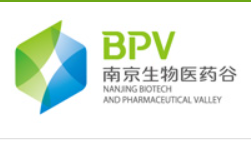用1HNMR确定混合物中各组分的相对百分含量是比较方便的.
1.要知道原料,产物,溶剂,杂质的结构和分子量.
2.正确辨认原料,产物,溶剂,杂质的特征NMR信号,正确积分.
3.每个化合物选定一个信号,分别求出一个H的面积.它们之间的比值就是摩尔比.换算成重量比就更容易了.
如果原料和产物中都有甲基,那就用二者的CH3信号积分值比,即二者的摩尔比.
4.残留溶剂比如醋酸利用CH3的1HNMR信号.
5.可以把三个成分作为100%(假定样品中几乎没有水分和无机成分),也可以计算%.
方法是比较灵活的.特殊情况的问题再叙.
此法比较方便快捷,误差通常在可接受的范围,当然没有色谱法精度高。
1HNMR不但可以测定混合物中成分的相对含量,也可以通过加入合适的内标测定绝对含量,有很多文献.
有个术语叫Quantitative NMR(QNMR).
国外有1HNMR定量测定天然混合物的论文和综述文章.
比如:
Based on a brief revision of what constitutes state-of-the-art “quantitative experimental conditions” for 1H quantitative NMR (qHNMR), this comprehensive review contains almost 200 references and covers the literature since 1982 with emphasis on natural products. It provides an overview of the background and applications of qHNMR in natural products research, new methods such as decoupling and hyphenation, and analytical potential and limitations, and compiles information on reference materials used for and studied by qHNMR. The dual status of natural products, being single chemical entities and valuable biologically active agents that need to be purified from complex matrixes, results in an increased analytical demand when testing their deviation from the singleton composition ideal. The outcome and versatility of reported applications lead to the conclusion that qHNMR is currently the principal analytical method to meet this demand. Considering both 1D and 2D 1H NMR experiments, qHNMR has proved to be highly suitable for the simultaneous selective recognition and quantitative determination of metabolites in complex biological matrixes. This is manifested by the prior publication of over 80 reports on applications involving the quantitation of single natural products in plant extracts, dietary materials, and materials representing different metabolic stages of (micro)organisms. In summary, qHNMR has great potential as an analytical tool in both the discovery of new bioactive natural products and the field of metabolome analysis.
我和同事发表的1HNMR法定量测定替米考星的含量的论文摘要(分析测试学报)。
—————————————–
Historical Background of qNMR. Quantitative NMR (qNMR) is almost as old as NMR itself. Early reports regarding the achievable precision of quantitation are inconsistent, and some of them even tended to deny NMR a role as a precision method by estimating the error to be in the 10% range. Interestingly, and with notable exceptions,textbook literature often does not emphasize the quantitative aspects of NMR and, thus, does not motivate educators and researchers to consider qNMR as an analytical tool. This stands in contrast to the authors’ recent personal discussions with experienced NMR spectroscopists, as well as to the tenor of the publications cited in this review, according to which the quantitative power of 1H NMR and its broad applications are greatly underestimated. Moreover, recent developments in the field have provided evidence that NMR can be developed as a precise quantitative tool and, in time, can even be a primary analytical method.
As can be seen from Figure 1, there is a steadily increasing interest in qNMR over the past 40 years, as measured by the number of publications in the field (Chemical Abstracts). However, taking into account the overall rapid increase of publications in science, and especially when considering the statistics for natural products related qNMR (solid bars in Figure 1), there seems to be almost no gain in interest in the past 15 years, a period that has been exceptionally productive in terms of NMR hardware development. It must be noted, however, that the metabolomic studies mentioned below, which often involve (semi-) quantitative NMR analysis, are not included in this statistical picture, because the necessary qNMR keywords cannot be searched successfully since they are not included in the database entries of the corresponding publications. The importance of the qNMR methodology in this recently emerging area of research, however, indicates the rising impact of qNMR methodology on natural products research in general.
——————————————————–
Literature Background of qNMR. Because qNMR has been living in the shadow of the multifaceted and multidimensional qualitative NMR used in structure analysis, neither has it been used as widely and routinely nor is a recent and comprehensive overview of the literature available. However, Szantay and Evilia have reviewed systematically the general experimental factors known to interfere with quantitative determinations in NMR. Their articles cover relaxation, digitization, and instrumental parameters and provide valuable sources of information independent from the observed nuclei. Certainly noteworthy, while exclusively dealing with analyses of drugs and pharmaceuticals, is the extensive qHNMR work by Turczan and co-workers at the FDA, which to our best knowledge has not been summarized in a review format. Their experience shows that typical errors fall in the 0.5-2% range, and their reports serve as a valuable resource when it comes to the selection of qNMR reference standards (see below). The essential lack of reports describing the application of qHNMR in natural product research is confirmed in a 1989 1H/13C NMR review by Pieters and Vlietinck, who concluded that, despite the great potential of qNMR, suitability has to be established for each individual case. The excellent review series focused on 1H NMR by Rackham that begun in 1975, unfortunately, has been discontinued, leaving almost all of high-field qHNMR uncovered. The present review seeks to fill this gap and to provide a comprehensive survey of the qHNMR literature by discussing recent and forthcoming technological innovations, while concentrating on the applications of qHNMR to complex samples (mixtures) such as materials that are obtained from natural sources. Because the second most studied organic NMR nucleus (13C) is considerably less sensitive (1.6% of 1H sensitivity for an equal number of nuclei, augmented by a sensitivity loss due to the 1.1% natural abundance of 13C) and affords quantitative information significantly more difficult to obtain, in particular for small natural product samples, this review will focus on the 1H variant of qNMR (qHNMR). Unless NMR technology achieves another quantum leap in sensitivity, it is reasonable to hypothesize that proton NMR will remain the most suitable nucleus for quantitative studies, especially for natural products, and is preferred over the much more dispersive, but inherently less sensitive heteronuclei. One exception is 19F, with 88% of 1H sensitivity (100% 19F natural abundance), which due to its negligible background interference is evolving into a preferred quantitative tool in drug metabolism studies. The application of 19F NMR for studying natural products is very limited at this time,and while not presently enjoying practical widespread utility, it could become an important qualitative and quantitative screening tool in the search for new naturally occurring organofluorine compounds. Another relatively sensitive nucleus, which has been used for extensive qualitative and quantitative applications, is 31P NMR (7% of 1H sensitivity, 100% 31P natural abundance), but this is also beyond the scope of this review.
The present review (see organizational Figure 2) covers the scientific literature from 1982 to July 2004. A thorough manual screening has been performed of ca. 8000 primary hits obtained from the Chemical Abstracts database through the use of SciFinder, when searching the concept “quantitative NMR” (see Figure 1). It has been the experience of the authors in their own research involving qNMR, and from extensive communications with colleagues, that qNMR is much more frequently applied in the industrial sector and in the regulatory environment than is reflected in the published scientific literature. Therefore, the proceedings of two conferences have been included in the literature survey: first, beginning with 1988, the abstracts of the Experimental NMR Conference (ENC),which represents a foremost platform for information exchange on NMR topics, and second the recent “Small Molecules Are Still Hot” (SMASH) NMR conferences,albeit providing few of the documented qNMR applications. The review is organized in two major sections. The first section deals with a discussion of the experimental aspects of the qNMR experiment, and the second section is devoted to a compilation of relevant applications of the qNMR technique for natural product analysis.
————————————
下面是个文献例子。
内标法定量NMR测定市售指甲油卸妆液中的丙酮和乙酸乙酯
Acetone and Ethyl Acetate in Commercial Nail Polish Removers: A Quantitative NMR Experiment Using an Internal Standard
The qualitative and quantitative analysis of commercial nail polish removers is performed on a 60 MHz NMR spectrometer. After taking NMR spectra of the polish removers, students can make peak assignments for the known components of acetone and ethyl acetate. Using these spectra, students are also able to identify the unknown alcohol present in the remover as ethanol. Quantitative analysis of either the acetone or ethyl acetate in the nail polish removers is accomplished by comparing the analyte peak intensities with that of an internal standard. The system in which deuterated acetone is used as a solvent and methylene chloride as an internal standard gave precise results for both commercial removers and for standards prepared from pure acetone or an ethyl acetate/ethanol mixture. As recovery from the standards was approximately 96 – 98% of what was anticipated, the analysis of the commercial products is also believed to be accurate.
Citation: Clarke, David W. Acetone and Ethyl Acetate in Commercial Nail Polish Removers: A Quantitative NMR Experiment Using an Internal Standard J. Chem. Educ. 1997 74 1464.
——————————-
定量NMR验证
Validation of quantitative NMR by F. Malz; H. Jancke (pp. 813-823).
NMR is by definition a quantitative spectroscopic tool because the intensity of a resonance line is directly proportional to the number of resonant nuclei (spins). This fact enables, in principle, a precise determination of the amount of molecular structures and, hence, of substances in solids as well as liquids. With the increase of sensitivity due to stronger and stronger static magnetic fields including improved electronics the detection limits have been pushed down significantly. However, the lack of a precise protocol that considers and controls the aspects of both the measurement procedure as well as the spectra processing and evaluation is responsible for the fact that quantitative investigations of identical samples in various laboratories may differ severely (deviations up to 90% relative to gravimetric reference values).Here, a validated protocol for quantitative high resolution1H-NMR using single pulse excitation is described that has been confirmed by national and international round robin tests. It considers all issues regarding linearity, robustness, specificity, selectivity and accuracy as well as influences of instrument specific parameters and the data processing and evaluation routines. This procedure was tested by the investigation of three different 5-model-compound mixtures. As a result of the round robin tests using the proposed protocol it was found that the maximum combined measurement uncertainty is 1.5% for a confidence interval of 95%. This applies both for the determination of molar ratios and of the amount fractions of the various components. Further, the validation was extended to purity determinations of substances as shown for 1,8-epoxy- p-menthane (cineole).
Keywords: Validation; Quantitative NMR; Cineole; Purity; Round robin test
————————————————–
定量NMR在合成和组合化学中应用
Quantitative NMR in synthetic and combinatorial chemistry by Vincenzo Rizzo; Vittorio Pinciroli (pp. 851-857).
The applications of quantitative NMR to synthetic organic chemistry are reviewed with taking into account both the small libraries (100–150 compounds) and the single, well-characterized substance. The precision and accuracy which are obtained with state of the art instrumentation – both around 1% – rival with other classical tools of quantitative analytics, and qNMR does not require a specific method setup or a standard of the same substance. This characteristic makes it the method of choice in an environment where many different molecules are investigated and reliable quantification is required. NMR may effectively replace other standard characterization tools, such as CHNS analysis, or even complex, multi-determination results as commonly required for the assessment of absolute purity or strength of a substance, when no specific standard is available. Finally, because of the high precision and intrinsic accuracy, quantitative NMR appears the ideal reference method for the validation of other, more rapid, generic techniques for quantitative analysis.
—————————————–
定量NMR评价工业级农药(2,4-二氯苯氧乙酸和2,2-二氯丙酸钠的纯度Quantitative nuclear magnetic resonance (QNMR) spectroscopy for assessing the purity of technical grade agrochemicals: 2,4-dichlorophenoxyacetic acid (2,4-D) and sodium 2,2-dichloropropionate (Dalapon sodium).
Comparison of quantitative NMR spectroscopy (QNMR) with chromatographic methods such as gas chromatography (GC) or high-pressure liquid chromatography (HPLC) for the determination of the purity of and impurities in technical grade agrochemicals, 2,4-dichlorophenoxyacetic acid (2,4-D), 1, and Dalapon sodium (sodium 2,2-dichloropropionate), 10, has revealed that QNMR is more precise and accurate than the chromatographic methods. Quantitative impurity profiling of technical grade 1 is rapid and accurate using 600 MHz (1)H NMR. Extra dispersion at the relatively high frequency allowed full assignment of the NMR spectrum of 1 and its related organic impurities in technical samples. The percentage purity of 1 was measured by the difference QNMR method, which involves summing the amounts of impurities and subtracting from 100%. Results are superior in consistency to those obtained by chromatographic methods. The percentage purity of Dalapon sodium, 10, in technical grade batches is readily obtained by (1)H QNMR, using either the difference method or the internal standard method, using dimethyl sulfone (DMSO2) internally as a reference material, that is chemically unrelated to the analyte. The latter method also allows the simultaneous identification and quantification of impurities, many of which are either not accessible to or detectable by the chromatographic methods. Uncertainty budgets for the QNMR method are presented and demonstrate that the major contributors to uncertainty lie in the weighing of the chemicals and in purity of the standard reference material prior to the QNMR experiment
[ Last edited by celan on 2011-4-25 at 10:25 ]
[ Last edited by celan on 2011-4-26 at 09:01 ]







